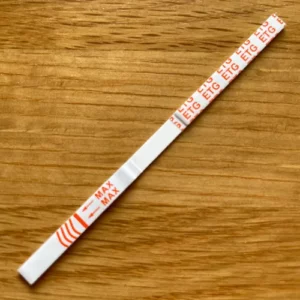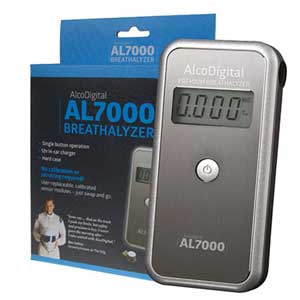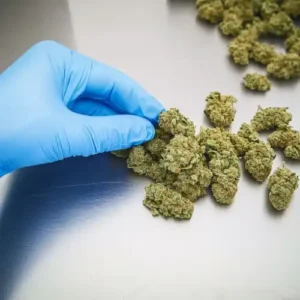ETG testing is designed to detect the presence of Ethyl Glucuronide (ETG), which is a direct metabolite of alcohol (ethanol). Such tests can detect recent alcohol ingestion, even after the time that ethanol can no longer be measured. The ETG test is highly suitable for alcohol treatment programs that have zero tolerance policies and for enforcing alcohol abstinence. In this article, we will go over the facts and myths about ETG testing.
ETG Test Detections Times
The ETG test is often known as the 80-hour alcohol test, but in most cases, the detection time is considerably shorter. After a small to moderate amount of alcohol has been drunk, the detection time is usually up to about 48 hours. If a greater volume of alcohol has been consumed, it can be detected for up to 72 hours. It is unlikely that alcohol would be detected in urine up to 80 hours after the event.
It is worth noting that ETG can also be detected using a hair follicle test. This type of testing is much less common than urine testing, when screening for ETG, and a lot more expensive to administer. However, when testing a person’s hair, the ETG metabolite can be traced for up to 90 days. Nearly ten times as long as when using a urine test.
How Accurate Is ETG Testing?
ETG testing is very accurate at detecting alcohol consumption. ETG test strips from Zoom Testing have a sensitivity of 500ng/mL and a 99% accuracy in clinical trials. Trying to cheat an ETG test is very hard, despite numerous YouTube videos that suggest that this might be possible!
Understanding Test Sensitivity
The sensitivity of the ETG urine test refers to the lowest concentration of the metabolite that can reliably be detected. ETG tests typically have a cutoff threshold of 500 ng/mL. This means a urine sample containing over 500 ng/mL of ETG will test positive.
The more sensitive the test, the lower the concentration of ETG needed to trigger a positive result. Some extra sensitive ETG tests have a cutoff as low as 100 ng/mL. However, very sensitive assays are more likely to have false positives.
For most clinical applications, 500 ng/mL offers a good balance between sensitivity and specificity. This threshold detects alcohol use several days prior without excessive false positives.
How Test Sensitivity Compares to Breathalysers
Breathalysers measure blood alcohol concentration (BAC), not ETG. Most countries set the legal BAC limit for driving at 0.05 g/dL to 0.08 g/dL.
But a urine ETG test can remain positive at 500 ng/mL long after BAC returns to zero. For example, after 10 drinks, it could take 10 hours for BAC to reach zero, but ETG could be detectable for up to 80 hours.
So ETG urine testing does not correlate with BAC. ETG shows alcohol was metabolised recently – not current impairment. That’s why ETG testing is not used by traffic police, but rather in monitoring programs.
Why ETG Test Accuracy Is So High
With standard 500 ng/mL test strips, ETG urine testing boasts up to 99% accuracy in clinical evaluations.
This high level of accuracy stems from:
- The specificity of testing for ETG itself rather than ethanol
- ETG’s longer detection window that does not require precise sample timing
- Difficulty in cheating ETG urine tests with dilute or substituted samples
Proper sample collection, storage, and testing procedures also support accuracy. Samples should be collected under supervision and tested promptly after collection.
The high accuracy of ETG urine testing makes it ideal for monitoring abstinence in clinical programs with zero-tolerance alcohol policies. A positive ETG test reliably indicates alcohol exposure.
Improving Accuracy Further
If even higher accuracy is desired, programs can consider requiring:
- Higher ETG concentration cutoffs of 1000 ng/mL or 2000 ng/mL
- Additional confirmatory testing for positive samples
However, for most applications, the 500 ng/mL ETG urine immunoassay test provides sufficient accuracy in detecting recent alcohol use.
How Much Do You Have to Drink to Fail an ETG Test?
Zoom Testing ETG tests are very good at detecting alcohol consumption. Even after just one drink, you can have a positive ETG test. You do not need to be a big drinker to test positive.
Can You Pass an ETG Test in 48 Hours?
It depends on how much alcohol was consumed. Generally, it takes about 48-72 hours for ETG to be eliminated from the body after light to moderate drinking (1-3 drinks). However, after heavy alcohol consumption, ETG can be detected in urine for up to 80 hours or even longer in some cases.
So if you had a few drinks at a social event, you would likely pass an ETG test after 48 hours. But if you engaged in binge drinking, it could take significantly longer than 48 hours to reliably pass. The more alcohol consumed, the longer the detection window.
Keep in mind, these are general guidelines and detection times can vary based on individual factors like weight, metabolism, hydration, and health conditions. If you are being monitored for alcohol abstinence, it’s best to completely avoid drinking any amount of alcohol to ensure passing an ETG urine test.
Can You Get a False Positive on an ETG Test?
Getting a false positive on an ETG test is not unknown, but they are usually caused by the consumption or exposure to alcohol in some other form, for example, from mouthwash, hand sanitiser, or foods containing alcohol. False positives are more likely when employing an extra-sensitive ETG test as they can detect small amounts of alcohol in many common household products.
ETG Tests Remain Positive Long After Blood Alcohol Levels Return to Zero
True. The exact period depends on how much alcohol was consumed, but this can be as long as 80 hours after ethanol was consumed.
ETG Tests Will Determine When and How Much Alcohol Was Consumed
False. A rapid ETG test only shows ethanol was consumed at some point before the test, not when or how much.
Ethanol Produced in the Body by Diabetes Can Trigger a False Positive
False. The cut-off level set for the rapid ETG test is well above the levels expected in metabolic diseases such as diabetic ketoacidosis and liver disease. It is important to note that ETG testing is not a diagnostic tool for these conditions, and further medical evaluation may be necessary.
Where Can I Buy ETG Urine Alcohol Test Strips?
ETG test kits, including the rapid on-site urine test strips, can be purchased online from Zoom Testing. Buying from Zoom Testing will ensure that the ETG test strips being purchased are of high quality and have been tested for accuracy and sensitivity. Proper storage and handling of the test strips is also essential to ensure accurate results. It is recommended to consult with a healthcare professional or drug and alcohol testing expert before using ETG testing for any specific purpose.
Photo: “ETG Testing” by Anthony Cunningham for Zoom Testing
Zoom Testing is a leading UK drug testing company and a supplier of Drug Test Kits.







